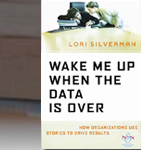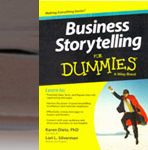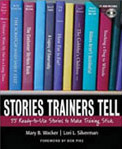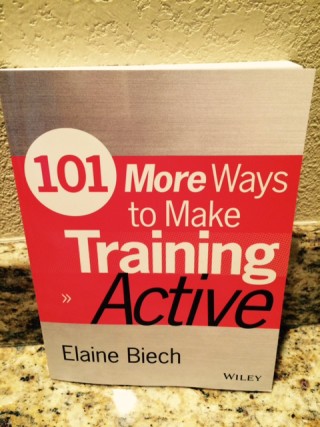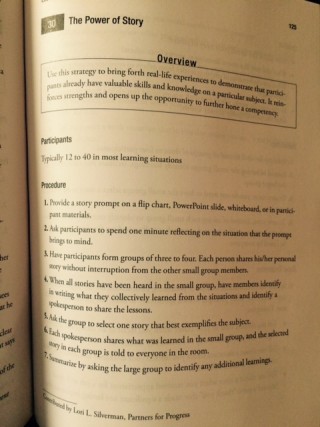In fall of 2003, I got this hair-brained idea to document 100 great examples of organizations of all sizes and shapes using business storytelling. To do this, I enlisted the help of hundreds of people. I stopped at 81 on New Year’s Eve of 2005. Why? Because what I started to notice was that not all of the examples people were providing were actually grounded in the true rigor of story.
Ever since the book that contains these examples — Wake Me Up When the Data Is Over — was published by Jossey-Bass/Wiley in 2006, I’ve been on the search for more examples. So I was thrilled when I saw the blog post on LinkedIn by Chris J Reed Black called “What is Storytelling? Microsoft’s Chief Storyteller Explains.”
I was heartened when I saw the graphic that distinguishes storytelling from corporate speak. Then I saw the link to “a great portal full of great stories” which takes you to a page called “Stories: Get an inside look at the people, places, and idea that move us.” As I looked down the page, I saw entries titled profiles and features that revealed lots of interesting information and tidbits, and strings of beginnings of stories, but no full fleshed out stories.
Then I saw a reference to a site called 88 Acres — so I checked it out, hoping I might get some type of future story (vision story or scenario story). Instead, I encountered what I’d call a “news report” rather than a story.
So I’m left wondering: Is Microsoft really using business storytelling in the truest of senses? Or is it labeling other forms of narrative — anecdotes, news reports, profiles, descriptions and the like — as stories.
I crafted the following comment to this article. When I hear something back about it, I’ll let you know!
In the meantime, please do not be fooled into believing that everything people label as business storytelling really is. For me, this is one of the greatest challenges in the field that those of us as thought leaders and practitioners face. Until we can agree on the definition of what a story is and isn’t, we won’t have a common standard by which to grow the knowledge and practice base in the industry.
Chris,
Thank you for bringing forward what you heard from Microsoft and alerting us to the two links – the portal and 88 Acres. I’m always seeking examples of businesses who are using storytelling in the workplace in multiple applications. My ultimate goal as a strategist is to show story is a necessary core competence.
Here’s a dilemma I’m having with your article. From 2004-2006, I spearheaded a project to identify as many applications of storytelling in business that I could, with the support of hundreds of people around the world. That project turned into a book called Wake Me Up When the Data Is Over.”
My dream was to find 100 examples but I settled at 81. Why? Because most of what people were saying was a story wasn’t. It was some other form of narrative – an anecdote, example, profile, news report, description, case study and the like.
Armed with this knowledge, and an experience speaking at a conference to corporate communications professions who were curious to learn more about how story is different than other narrative forms. my colleague Karen Dietz and I wrote a piece called Narrative Types, which takes a well crafted story and depicts it as an anecdote, example, description, etc so people can visually see the difference. This content also became part of a chapter in the book, Business Storytelling for Dummies.
Every time I see a post like yours, I research all the links to identify the stories being used by the company. When I reviewed the portal and 88 Acres, I couldn’t find a story. I saw profiles and great descriptions and scenarios, but no stories.
Please help me here. Do you have a link to an actual story used by Microsoft today that we could all see? I know a true form of stories were used within marketing research in 2005 since my former husband worked in this function for the company and wrote that chapter in the Wake Me Up book. Any link or information you can supply would be helpful since I continue to seek out examples.
Many thanks,
Lori Silverman
